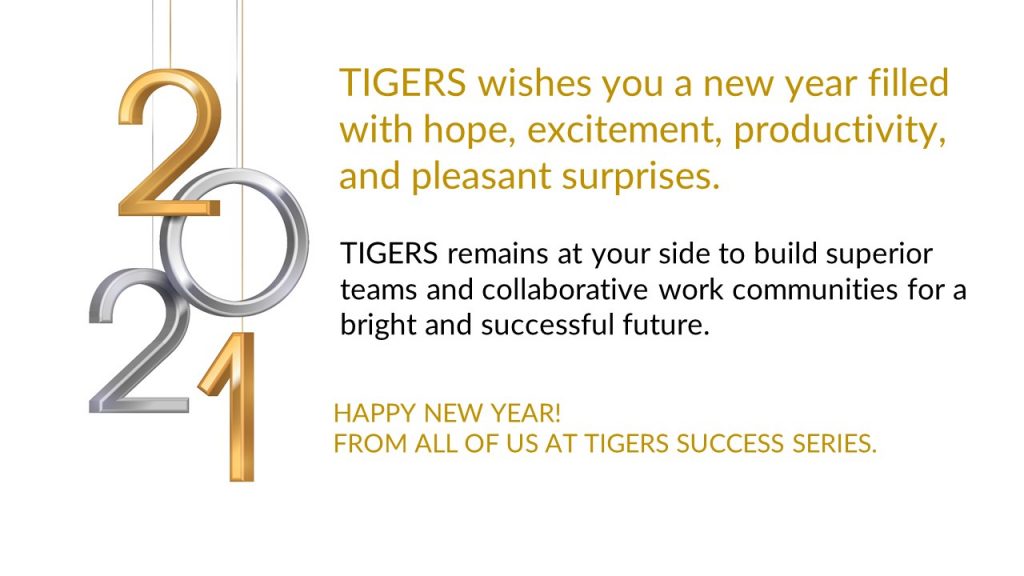
iStock
There are decades where nothing happens, and there are weeks where decades happen. If 2020 were a quote, this would be it. This oft-uttered quote by Vladimir Lenin would find its way to the front pages whenever rapid changes take place after a long lull. With this in mind and a distorted year behind us, what are the collaboration trends that shape today’s workplace this year?
The pandemic propelled us to perhaps decades ahead in the workplace in just weeks. It didn’t just change the way we did huddles and meetings. It revamped everything – from daily office routines to communication, to interactions. It lifted many of the micro-management practices off employees and focused leaders on outcomes rather than command and control. The effect is so huge, ‘leaving long-lasting effects on marketing events, training, recruitment, and company culture.
Some collaboration trends that shape today’s workplace
Months in, here’s what I’ve observed.
-
The use of digital technology was (and will continue to be) adopted at lightning speed.
It would normally take an organization at least three months to transition to a digital platform for selected procedures. In the last 10 months, we saw the exponential use of video meets, messaging, and file-sharing apps, as well as robotics, artificial intelligence, and machine learning. As a trend, get your employees trained and up to speed on these technologies. If you don’t have a trainer in your organization to set this up for you, hire one who can. This is an agile move with collaboration outcomes that benefits you now and in going forward.
-
Workplace flexibility became such a huge priority
I used to fancy a 45-minute commute. With the pandemic, the most we did was hop from breakfast nook to work table. And if video calls weren’t even scheduled for the day, we’d still be in our robes and flip flops. But humor aside, the work from home setup has reduced red tape and bureaucracy. Ideas, comments, and suggestions would fly faster. We’ve got less of the silo mentality (reluctance to share information with employees or co-workers from different departments of the same company) and more of the collaboration mindset.
Further, many small-to-medium-sized organizations have a heightened awareness of cost-efficiency. To keep needed employees employed, cost-cutting measures included ditching the physical office for a virtual one. The key is figuring out ways to replicate a “water cooler” power conversation and “check-in” virtually.
Share your ideas and practices with me here and I would be happy to quote you in a future article on virtual power conversation best practices.
-
There has been a paradigm shift in values and work culture.
Though we miss the coffee break banter, the usual perks of stunning city views, free food, and Friday nights with the team don’t seem as important now with the pandemic still wrecking havoc. What matters most is getting our priorities straight. Virtual connection is important. Plan now to improve connection with your team members and find ways to kick back together and just enjoy each other’s company.
Working from home brings with it a host of new challenges – keeping home and work separate, spending quality time with loved ones, and avoiding burnout. Sometimes all it takes is a TIGERS licensed coach to help you establish professional boundaries and more work balance in your life.
This is why while many cities are still on lockdown (or some hybrid of it), leaders must soldier on into 2021 with training, coaching and wellness programs.
Collaboration trends that shape today’s workplace going forward into 2021
Here’s what I see happening in the workplace for 2021.
-
Compliance with regulatory requirements will have nuances
Government and state compliance are high priorities now that protocols have changed. On the human resources turf, this means that non-fulfillment of notice posting requirements can have dire consequences. For instance, is it enough to post announcements via video chat and websites? (Short answer is no. Postings must be done electronically and conspicuously at the worksite). Keep abreast with the U.S. Department of Labor’s requirements as well as your state regulations for work from home employees.
-
Training and up-skilling take center stage
Flexible schedules and remote work mean new software and tools. It isn’t safe to assume that Gen Zers (born 1997 and onwards) will adapt to it without training or that senior staff won’t need it. Training is a core function regardless of age, skill set, geographic location, or time zone. Training nurtures top talent and helps retain valuable employees. It also improves employee engagement. If you are not yet familiar with our Genuine Communicator Micro-Training Platform that helps employees:
- Establish communication boundaries;
- Give and receive feedback;
- Minimize negative self-talk consequences;
- Be Assertive Communicators rather than Aggressive or Passive Aggressive; and,
- Understanding the communication and ego needs of self and others
do check it out. This course is offered on demand and we also offer it with coaching from TIGERS approved and licensed leadership and training coaches.
We can also package this training with a leadership training platform that helps you create employee development plans, learning circles and strategies for transforming what is learned into improved work performance. We have made this customizable to serve your unique needs since there is no cookie cutter approach to team improvement because one size will never fit everyone.
-
Expect more Gen Zers entering the workplace
The oldest people in this demographic are 23 years old. U.S. Statistics show that this group will make up at least 36% of the workforce by 2021 (around 40 million). This generation prioritizes independence and is inclined towards creativity and entrepreneurship. This makes them excellent potential cross-functional team members when trained in team participation skills.
Their agile contribution to planning execution is further benefited by getting independent work done well to serve agile team outcomes. While many don’t intend to start businesses just yet, this entrepreneurial mindset shows that they value how their workplaces are designed physically and otherwise. They want structure and a clear goal.
Being use to a fast-paced world (since they were never without the internet), they thrive with multiple digital tools in their workplace. Their skills are valuable.
Maximize their potential for participating on agile cross functional teams that receive cost saving or productivity bonuses through team focused-training. If you do, you have the makings of an organization that can do more with less with entrepreneurial employees who want your organization to be as successful as you do.
-
Customized work schedules are here to stay … for good
Employees view flexible work schedules as a benefit. So much so, that some workers would choose a flexible workforce arrangement over medical coverage. From an employee’s perspective, the benefits are significant – measurable employee engagement, reduced stressed levels, and wellness. Common issues are solvable with technology and mobile apps.
Also shift your leadership mindset from hourly compensation to performance-based outcomes. Outcomes focused on measurable projects are collaboratively achieved with team-savvy employees. They key is to develop them.
To date, at least 80% of organizations now encourage employees to work from home on a flexible schedule. Many have also dabbled with a four-day workweek as several dry runs yielded more productivity and employee engagement.
-
The office-centric workforce is history
All in all, an office-centric approach is considered history. 90% of those who have recently shifted to remote work disclosed that they would prefer remote work for the rest of their working years. A majority have adjusted to the challenges remote work presented early in 2020 and many are reaping the benefits of this newfound freedom and work-life balance. Also, workplace technology has evolved exponentially in the last few months. Managing a remote team across different time zones isn’t as demanding as it once was. Time management tools, and productivity platforms, are aplenty. Finally, an employee focused and humanistic workplace that is outcome focused, agile and cross-functional is gaining ground. All these aspects combined give remote work and flexible schedules a permanent seat in 2021’s workplace.
 With this, TIGERS wishes you a new year filled with hope, excitement, productivity, and pleasant surprises. You made it through 2020. You can definitely thrive this year!
With this, TIGERS wishes you a new year filled with hope, excitement, productivity, and pleasant surprises. You made it through 2020. You can definitely thrive this year!
You wrote and buzzed. We listened. Stay tuned for content on the essentials of team dynamics and collaborative leadership. Expect more posts on TIGERS’ 6 Principles, as well as valued tips (from TIGERS Licensed trainers, consultants, facilitators and human resource practitioners) to help you and your team thrive in the “new” workplace.
If you want to explore how to become a TIGERS Licensed consultant, give me a call to explore your options.
Care to take your learning deeper into collaboration trends that shape today’s workplace
Here are some additional resources:
- TIGERS Licensing and Certification
- TIGERS Genuineness Micro-Training
- How Remote Work Impacts Collaboration
- Why Agile Teams Struggle
- What Will Your Typical Workplaces Look Like in 2021?
- 2021 Workplace Trends Show An Emphasis on People
Copyright TIGERS Success Series, Inc. by Dianne Crampton
About TIGERS Success Series
TIGERS provides a comprehensive, multi-pronged and robust system for improving your workforce behavior, work culture, profitability and cross-functional team and leadership success.
 We specialize in building cooperation among employees and collaboration between departments for profitable agile, high performance team outcomes. Scaled to grow as your organization and leadership performance improves, our proprietary TIGERS Workforce Behavior Profile, Micro-Training technology and group facilitation methods result in your high performance team outcomes and change management success. We also license and certify elite internal and external consultants and project managers to use our resources for similar outcomes.
We specialize in building cooperation among employees and collaboration between departments for profitable agile, high performance team outcomes. Scaled to grow as your organization and leadership performance improves, our proprietary TIGERS Workforce Behavior Profile, Micro-Training technology and group facilitation methods result in your high performance team outcomes and change management success. We also license and certify elite internal and external consultants and project managers to use our resources for similar outcomes.
Schedule a conversation with us to learn more.